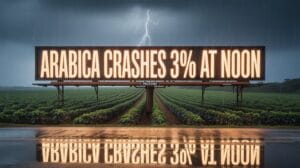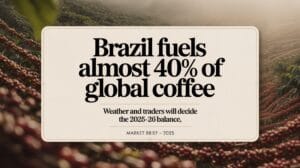As mid-2025 rolls around, coffee and cocoa futures are swinging in different directions. Arabica coffee dipped 0.7% to about $3.25 a pound. Record prices pushed Brazilian growers to sell more beans. Drought there is hurting next season’s crop. Holiday slow trading also weakened prices. Weather and supply issues keep Arabica locked in market volatility.
Robusta coffee rose 0.7% to roughly $5,041 a ton. Supply trends for the cheaper bean look steadier than for Arabica. Trackers run satellite scans to spot drought stress early. Still, dry skies remain a worry for 2026 harvest.
Robusta climbs 0.7% to $5,041/ton as steadier supply offsets 2026 drought dread.
Cocoa futures, in contrast, jumped around hard. London prices leapt 14.5% between mid-July and month end, inching from £4,782 to £5,477 each metric ton. After a June spike, prices slid 16% to 18% when rain returned to West Africa and Latin America. By mid-year, trades bounced between $7,800 and $9,200 a ton, still far above past years. US and EU stocks have climbed to the highest levels in roughly a year, easing fears of outright shortage.
West Africa faces tough crop news. Côte d’Ivoire and Ghana had a brief dry spell that hurt baby cocoa pods. Crop surveys now hint the 2025/26 harvest could shrink. Heavy June showers raised black pod disease risks. Yet fresh forecasts say better rain is coming, which might lift output. Ecuador is also planting more trees to help balance supply. In addition, the Harmattan wind across West Africa is accelerating soil moisture loss and threatening bean size, adding another layer of supply-side anxiety.
Funds closed about 7,000 bullish cocoa bets by mid-July. Buyers stayed active in New York, while London saw more sellers. After the US and EU signed a trade pact, a weaker British pound nudged London cocoa higher.
Traders feel stuck between fear of small crops and doubt over weak demand from big chocoholic countries in Asia and Europe. They report many buyers now look to lock in prices for later this year and early next, yet no one is sure if the market will calm or churn again.




